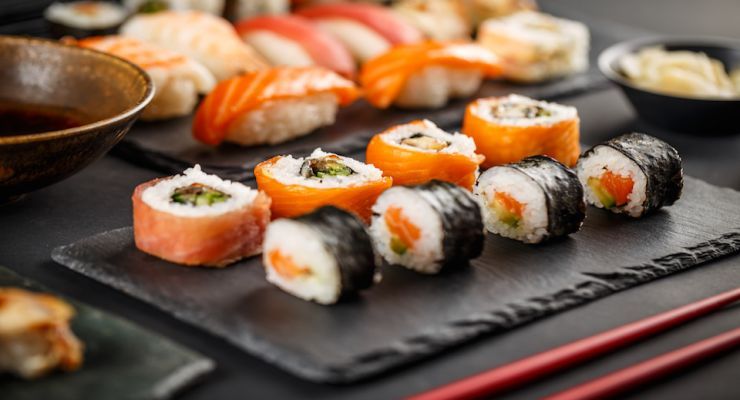As you scroll through Instagram, you’ll see plenty of brightly colored sushi dishes and the happy, eager faces that go along with them. It’s no secret that the world, particularly Asia, the Americas, and Europe LOVES sushi, but at what cost?
A Japanese tradition that dates back thousands of years, yet in the past few decades, it has become somewhat of a global gastronomic phenomenon — and our planet is paying the cost.
Before you order another round of California rolls, here’s what you need to know about this beloved food.
The Rise of Sushi
Although the history behind sushi differs from one source to the next, a fourth-century Chinese dictionary mentions salted fish wrapped in cooked rice. Undergoing a fermentation process, this method allowed the people of Asia to preserve the fish itself — a practice which originated in Southeast Asia.
The overall concept of “sushi” as a complete meal is credited to Japan in the ninth century. Being a favorite dish for those following Buddhist dietary practices, initiated the evolution of what we now enjoy today.
Not surprisingly, LA was the first American city to embrace sushi, and in 1966, Kawafuku Restaurant opened in Little Tokyo. Today, sushi continues to evolve as chefs from around the globe, incorporate new ingredients and preparation methods.
Between the years 1988 and 1998, the number of sushi bars in the United States quintupled and has continued to grow. This has led to many “picture perfect” dishes and a love for sushi unlike anything other. However, in the background, the environment has been crying out for help.
After all, you know what they say, “what goes up, must come down.” The rise in sushi (and other beloved foods) is slowly causing the world around us to crumble.
3 Ways That Sushi Has Harmed the Planet
As stated by the WWF, since 1980, worldwide salmon consumption has increased threefold. Of course, this demand increased the amount of farmed salmon, which now accounts for 70 percent of the market — and this is just one component.
Nearly every ingredient of sushi is produced at a high environmental cost. The consumption of avocados has skyrocketed (which is no surprise). However, to produce just ONE California-grown avocado, it takes around 90 gallons of fresh water.
Shocking, isn’t it?
From the collapse of Pacific bluefin tuna to the devastating effects of soy production, it’s time that we rethink not only sushi but our food system as a whole.
So, before you take your next bite of sushi, please consider the following concerns:
Sushi has a devastating impact on wildlife
Our world’s oceans have long been under threat — and the rate at which we’re pulling fish and seafood from the waters is still in many ways, unstainable.
As stated above, Pacific bluefin tuna is just one example. Pushed to the brink, its current estimated population sits at around 2.6 percent of its historic size — yet it is still being overfished. The impact on seafood is apparent, but it does not stop there.
In the past 50 years, soy production has increased tenfold. This crop has now become the second-largest agricultural cause of deforestation. This significantly impacts everything from birds to orangutans. You can read more about the impact of deforestation here.
Sushi in the developed world takes away from communities who rely on fish
When you take a bite of sushi, know that you are not likely consuming fish that was caught anywhere near North America. As industrial fishing operations continue to flood international waters, developing nations are feeling the effects.
Put simply, consumers in the developed world are often taking away critical food sources without much knowledge or awareness. There are poor individuals in Asia and Africa, for instance, who rely on local fish stocks.
Sushi ingredients are using copious amounts of natural resources
The avocado example above is just one of many, as the demand for such ingredients impacts natural resources — mainly freshwater. Rice is another ingredient that takes a heavy toll on freshwater resources. In fact, as stated in this interesting article, flooding rice paddles uses a third of our planet’s freshwater resources. However, new systems are being implemented which use up to 50 percent less water, which is a small consolation.
How to Help
Although you may love sushi, if you love the planet more, here are some ways you can actively help:
- Know where your fish is coming from and how it was caught
- Educate others on the importance of sustainable food practices
- Move toward a more plant-based lifestyle, supporting local farmers
- If you go out for sushi, do not promote the sale of “toro” or dishes which use bluefin tuna and other endangered species
- Don’t eat it at all
And remember, “We can’t just consume our way to a more sustainable world…
Susan Patterson

